Tom's Hardware Verdict
The Corsair HX1000i has good performance, silent operation, and top build quality. The only thing missing, for now, is a 12VHPWR connector.
Pros
- +
Full power at 47 degrees Celsius
- +
High build quality
- +
Efficient platform
- +
Capable APFC converter
- +
Silent
- +
Low ripple
- +
Long hold-up time
- +
Accurate power ok signal
- +
Proper OCP at 12V and OPP
- +
iCUE software
- +
Low inrush with 115V input
- +
Low vampire power
- +
High amount of cables and connectors
- +
Quality, FDB fan
- +
10-year warranty
Cons
- -
Not highly competitive performance
- -
High inrush at 230V
- -
OCP needs tuning on the minor rails
- -
Short distance between all peripheral connectors
- -
No 12VHPWR connector
- -
Transient response at 3.3V
Why you can trust Tom's Hardware
The Corsair HX1000i performs well but faces intense competition in this price range so it cannot enter our best PSUs article. Nevertheless, it features top-notch build quality and has quiet operation. The iCUE support is the cherry on top. Notable choices in this category are the MSI MEG Ai1000P which comes with a PCIe 5.0 connector, the EVGA 1000 P6, and the Toughpower Grand RGB 1050W Platinum.
After many years, Corsair decided to revamp its HXi line with two units, one with 1000W and a stronger model with 1500W max power. In this review, we will look at the former, which has enough power to support a potent gaming system equipped with a GPU that doesn't require a 12VHPWR connector. At press time, in the U.S. market, the HX1000i went for $217 on Amazon or $284 on Corsair's website (see curated list of Corsair discount codes for possible savings).












There have been lots of talks lately about PCIe 5.0 and ATX 3.0 compatible PSUs, and the fact is that it is highly preferred to get a PSU meeting both above standards. PSUs outlive several generations of CPU, mainboard and GPU products, so it is wise to invest in a PSU considering how future-proof it is.
Currently, PSUs without 12VHPWR connectors are not future-proof, and it is not only the absence of this connector that should worry you but also the ability to pass all respective transient response tests required by ATX 3.0. On the other hand, some users don't have a problem using adapters, usually three PCIe 6+2 to a single 12VHPWR, but we cannot suggest this method since it can cause various issues due to the increased resistance. In plain words, with adapters, you add another point of possible failure, and its degree depends on the quality of the adapters.







Specifications of Corsair HX1000i
| Manufacturer (OEM) | CWT |
| Max. DC Output | 1000W |
| Efficiency | 80 PLUS Platinum, Cybenetics Platinum (89-91%) |
| Noise | Cybenetics A- (25-30 dB[A]) |
| Modular | ✓ (fully) |
| Intel C6/C7 Power State Support | ✓ |
| Operating Temperature (Continuous Full Load) | 0 - 50°C |
| Over Voltage Protection | ✓ |
| Under Voltage Protection | ✓ |
| Over Power Protection | ✓ |
| Over Current (+12V) Protection | ✓ |
| Over Temperature Protection | ✓ |
| Short Circuit Protection | ✓ |
| Surge Protection | ✓ |
| Inrush Current Protection | ✓ |
| Fan Failure Protection | ✓ |
| No Load Operation | ✓ |
| Cooling | 140mm Fluid Dynamic Bearing Fan (NR140P) |
| Semi-Passive Operation | ✓ |
| Dimensions (W x H x D) | 150 x 85 x 180mm |
| Weight | 1.99 kg (4.39 lb) |
| Form Factor | ATX12V v2.53, EPS 2.92 |
| Alternative Low Power Mode (ALPM) compatible | ✓ |
| Warranty | 10 Years |
Power Specifications of Corsair HX1000i
| Rail | Row 0 - Cell 1 | 3.3V | 5V | 12V | 5VSB | -12V |
| Max. Power | Amps | 25 | 25 | 83.3 | 3 | 0.3 |
| Row 2 - Cell 0 | Watts | Row 2 - Cell 2 | 150 | 999.6 | 15 | 3.6 |
| Total Max. Power (W) | Row 3 - Cell 1 | Row 3 - Cell 2 | 1000 | Row 3 - Cell 4 | Row 3 - Cell 5 | Row 3 - Cell 6 |
Cables & Connectors of Corsair HX1000i
| Description | Cable Count | Connector Count (Total) | Gauge | In Cable Capacitors |
|---|---|---|---|---|
| ATX connector 20+4 pin (600mm) | 1 | 1 | 16-22AWG | No |
| 4+4 pin EPS12V (650mm) | 3 | 3 | 18AWG | No |
| 6+2 pin PCIe (680mm+100mm) | 3 | 6 | 16-18AWG | No |
| SATA (450mm+115mm+115mm+115mm) | 2 | 8 | 18AWG | No |
| 4 pin Molex (450mm+100mm+100mm+100mm) | 2 | 8 | 18AWG | No |
| USB Type C to Motherboard Header Cable (520mm) | 1 | 1 | 24-28AWG | No |
| AC Power Cord (1370mm) - C19 coupler | 1 | 1 | 16AWG | - |
Lots of cables and connectors but no 12VHPWR since this model was developed before ATX 3.0 became final. That said, we are sure that Corsair is already working on its update. ATX 3.0 and PCIe 5.0 ready version.
The three EPS connectors on dedicated cables will allow you to power the most power-hungry mainboard and CPU combinations, while the six PCIe are enough for this PSU's capacity. The only issue is the short distance between peripheral connectors.






Component Analysis of Corsair HX1000i
We strongly encourage you to have a look at our PSUs 101 article, which provides valuable information about PSUs and their operation, allowing you to better understand the components we're about to discuss.
Get Tom's Hardware's best news and in-depth reviews, straight to your inbox.
| General Data | |
| Manufacturer (OEM) | CWT |
| PCB Type | Double Sided |
| Primary Side | |
| Transient Filter | 6x Y caps, 2x X caps, 2x CM chokes, 1x MOV, 1x CM02X (Discharge IC) |
| Inrush Protection | 1x NTC Thermistor SCK20-150 (15 Ohm) & Relay |
| Bridge Rectifier(s) | 2x Vishay LVB2560 (600V, 25A @ 105°C) |
| APFC MOSFETs | 2x On Semiconductor FCPF067N65S3 (650V, 28A @ 100°C, Rds(on): 0.067Ohm) |
| APFC Boost Diode | 2x Infineon IDH08G65C6 (650V, 8A @ 145°C) |
| Bulk Cap(s) | 1x Nippon Chemi-Con (420V, 470uF, 2,000h @ 105°C, KMZ) & 1x Nippon Chemi-Con (420V, 560uF, 2,000h @ 105°C, KMR) |
| Main Switchers | 2x Infineon IPW60R099P6 (600V, 24A @ 100°C, Rds(on): 0.099Ohm) |
| Digital Controllers | 2x Texas Instruments UCD3138A |
| MCU | Microchip PIC32MM0064GPM036 |
| Topology |
Primary side: Semi-Digital, Interleaved PFC, Half-Bridge & LLC converter Secondary side: Synchronous Rectification & DC-DC converters |
| Secondary Side | Row 14 - Cell 1 |
| +12V MOSFETs | 10x Infineon BSC014N04LS (40V, 125A @ 100°C, Rds(on): 1.4mOhm) |
| 5V & 3.3V | DC-DC Converters: 6x UBIQ QM3054M6 (30V, 61A @ 100°C, Rds(on): 4.8mOhm) PWM Controller(s): uPI-Semi uP3861P |
| Filtering Capacitors |
Electrolytic: 2x Nichicon (2-5,000h @ 105°C, HD), 2x Nippon Chemi-Con (1-5,000h @ 105°C, KZE), 9x Nippon Chemi-Con (4-10,000h @ 105°C, KY), 2x Rubycon (4-10,000h @ 105°C, YXF) |
| Supervisor IC | Weltrend WT7502R (OVP, UVP, SCP, PG) |
| Fan Controller | Microchip PIC32MM0064GPM036 |
| Fan Model | Corsair NR140P (140mm, 12V, 0.22A, Fluid Dynamic Bearing Fan) |
| 5VSB Circuit | Row 21 - Cell 1 |
| Rectifier | 1x Silan SVF4N65RDTR FET (650V, 2.5A @ 100°C, Rds(on): 2.7Ohm) & 1x D10PS45L SBR (45V, 10A) |
| Standby PWM Controller | On Bright OB5282CP |




This CWT platform was co-developed with Corsair's engineers, which is why CWT is not allowed to give it to any other brand. This platform is exclusive to Corsair only. The design is modern, using digital controllers for most parts, including the whole primary side and a part of the secondary side. The build quality is high, with top-notch parts. This is why this product's price is increased. Finding good parts at reasonable prices nowadays is next to impossible.







The transient/EMI filter complete.


The pair of bridge rectifiers can handle up to 50 Amperes, easily meeting this PSU's requirements.

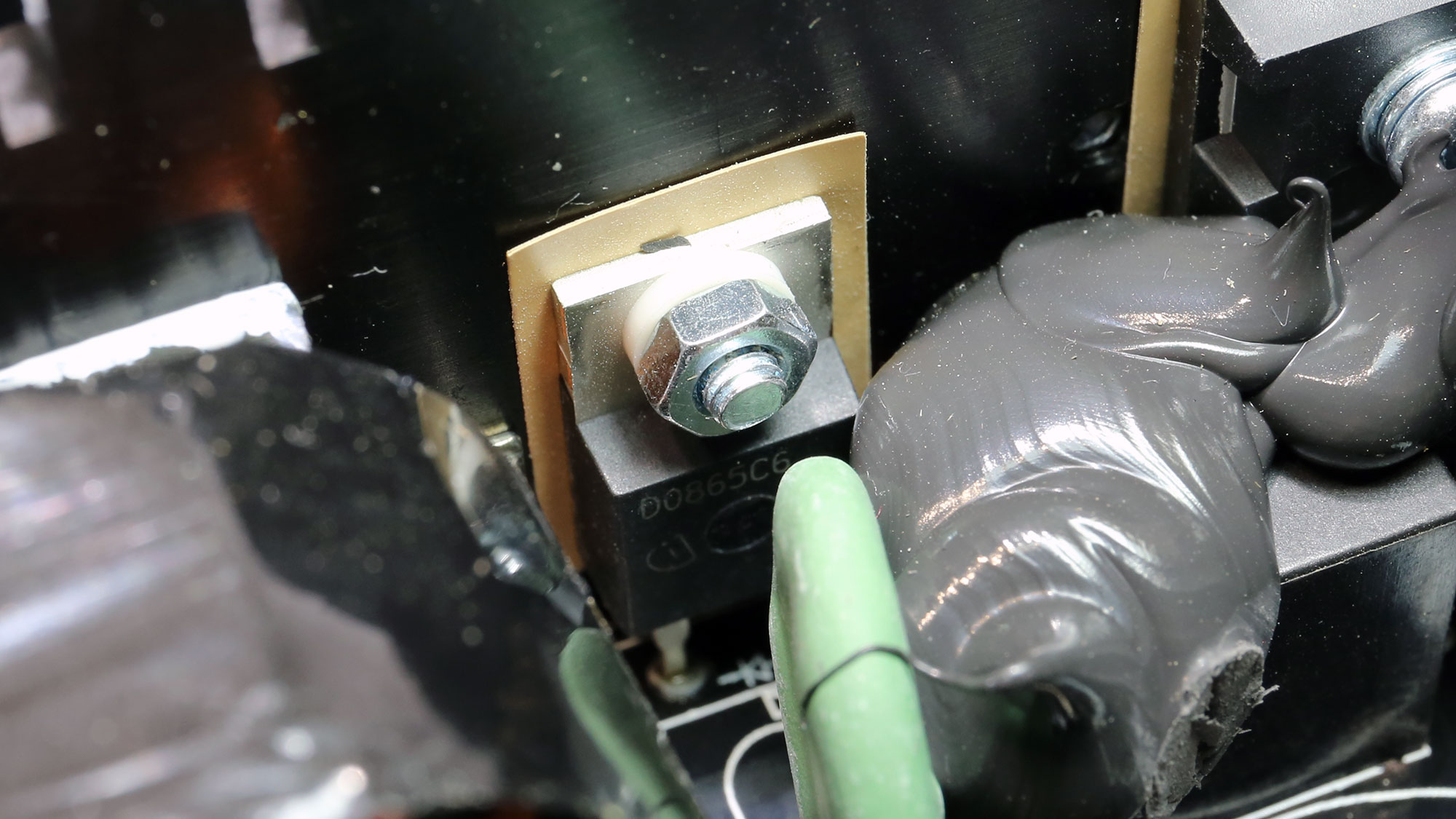

The APFC converter uses two On Semiconductor FETs and two Infineon boost diodes. It is digitally controlled, for optimum performance.


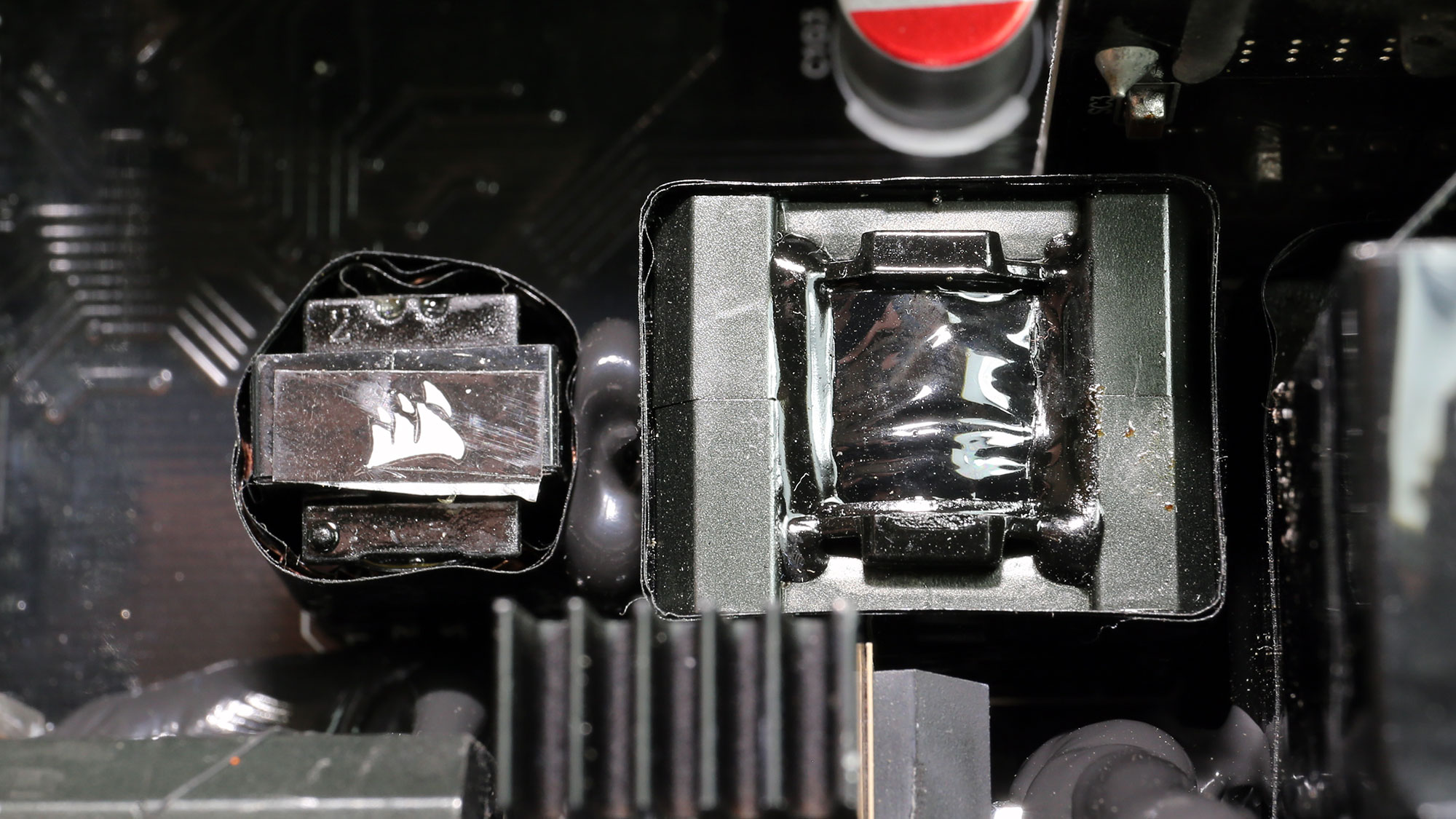
The main FETs are installed in a half-bridge topology and an LLC resonant is also used to provide an efficiency boost.



The board hosting all digital controllers.


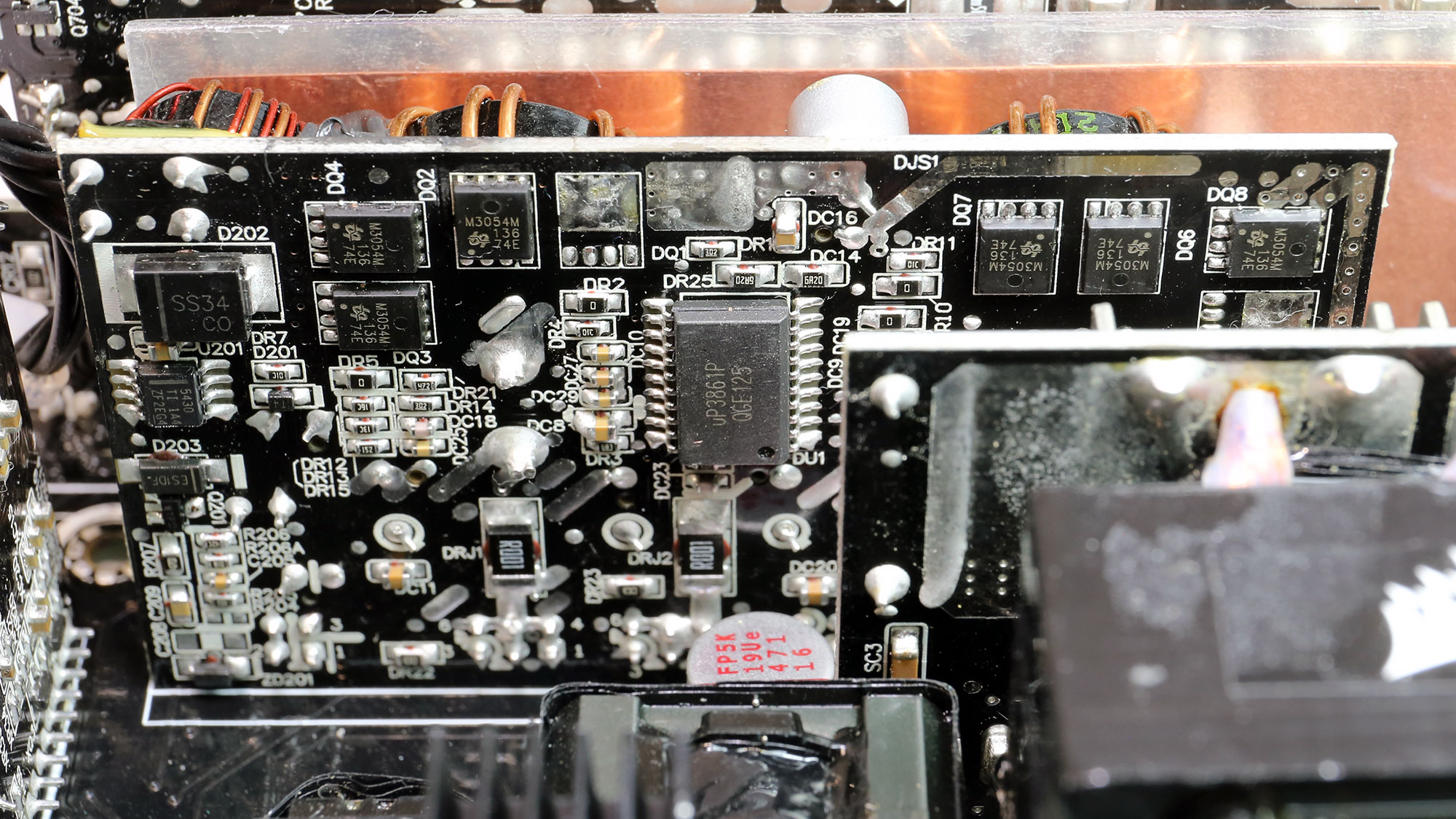



Ten Infineon FETs regulate the 12V rail. The minor rails are generated through a pair of DC-DC converters. The latter along with the 5VSB circuit are the only ones using analog controllers, and this is why we call this platform semi-digital and not fully-digital.
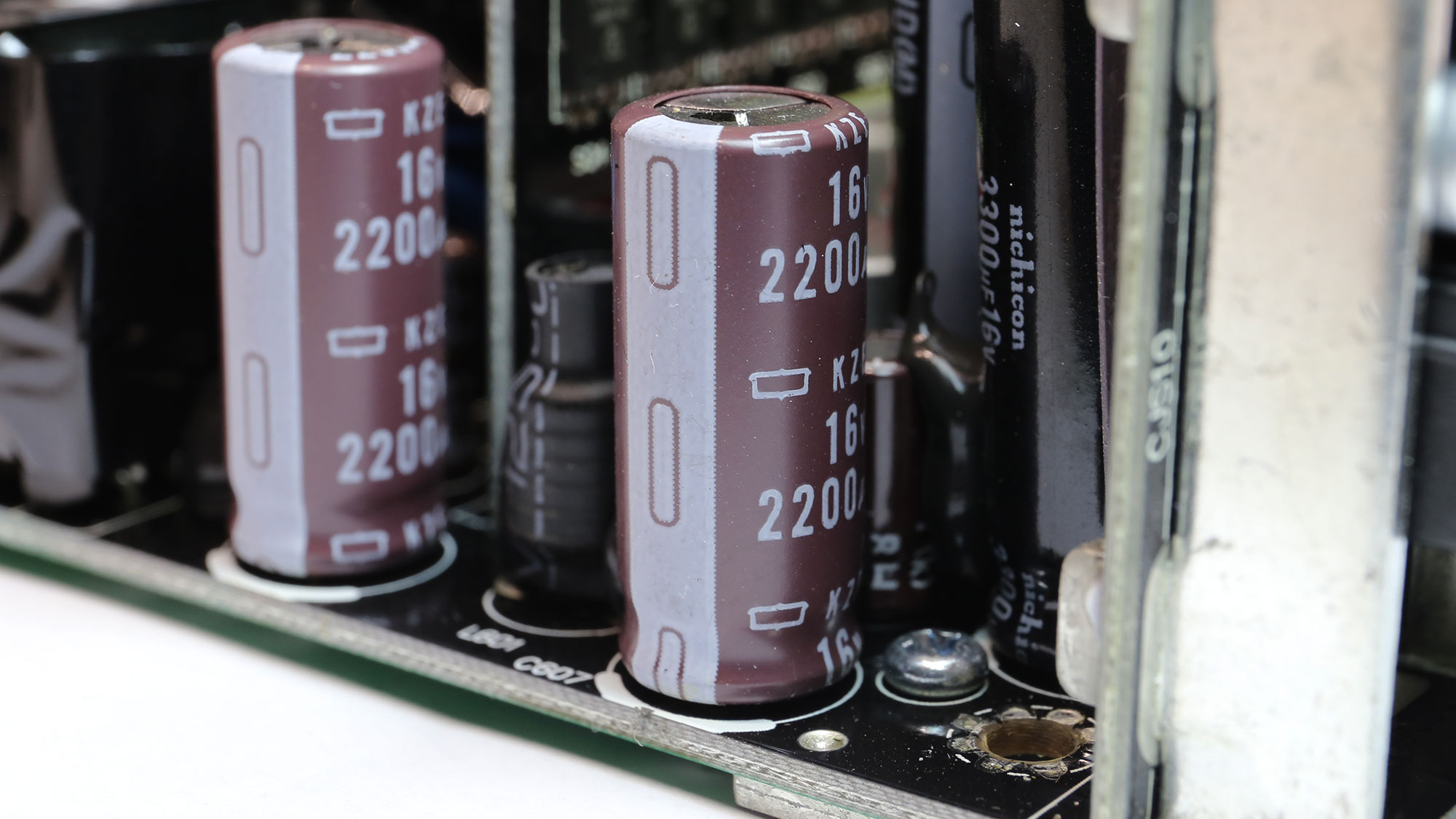


The filtering caps are of high quality and they won't have a problem outliving the long warranty, if you treat the PSU well.

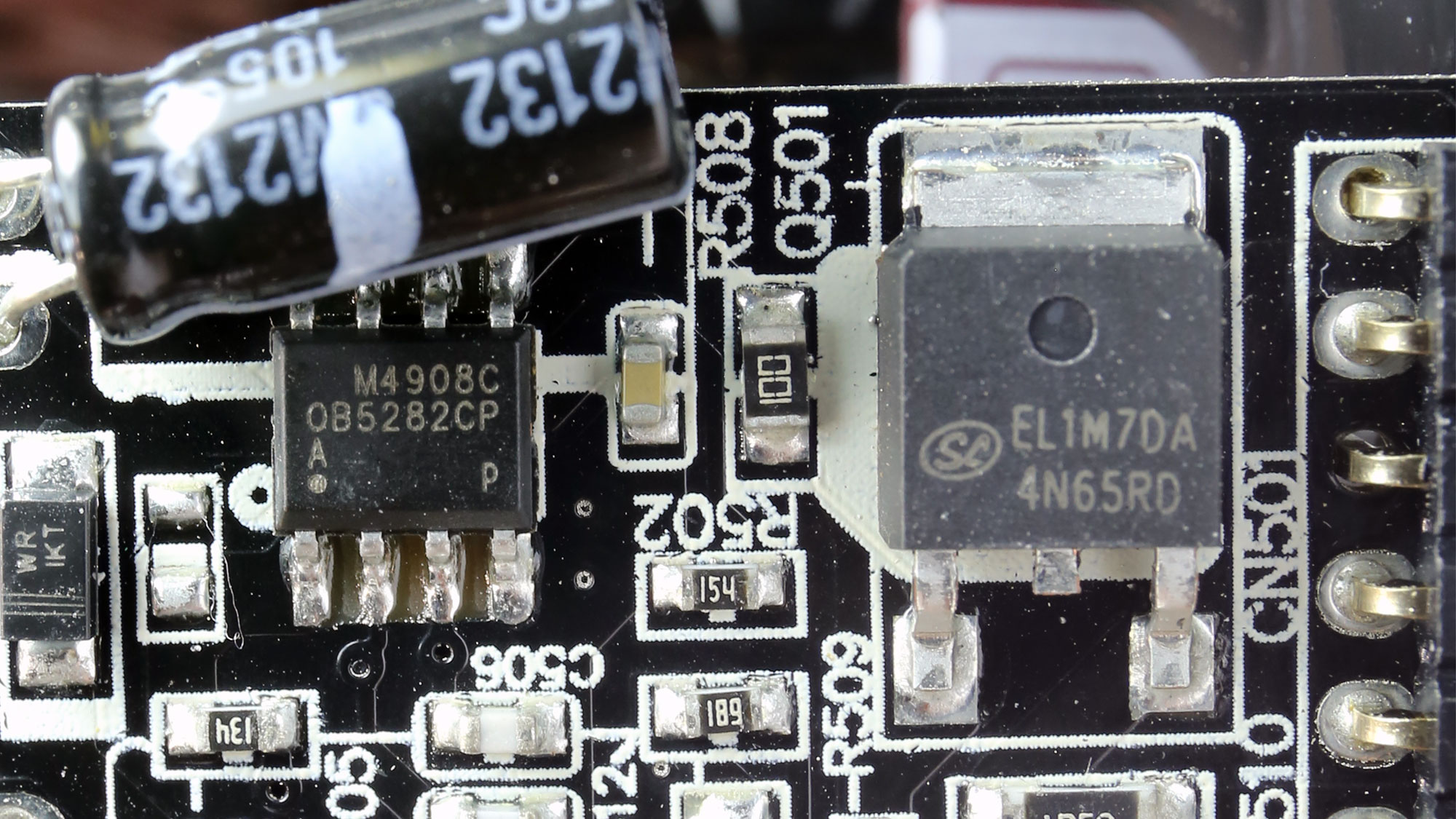


The standby PWM controller is an On Bright OB5282CP.


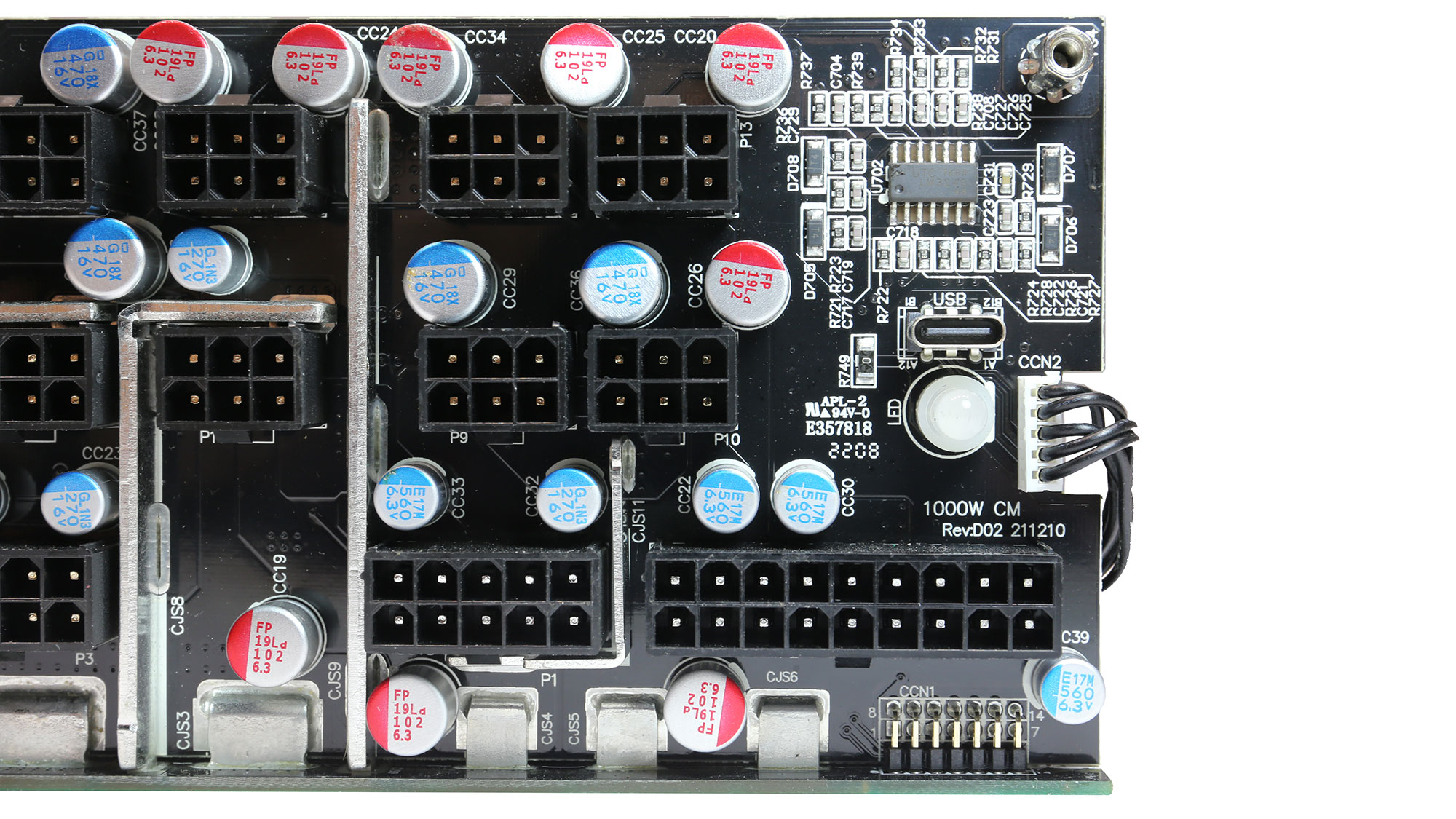
The modular board has many filtering caps and it also hosts the USB interface.

The main supervisor IC is a Weltrend WT7502R.


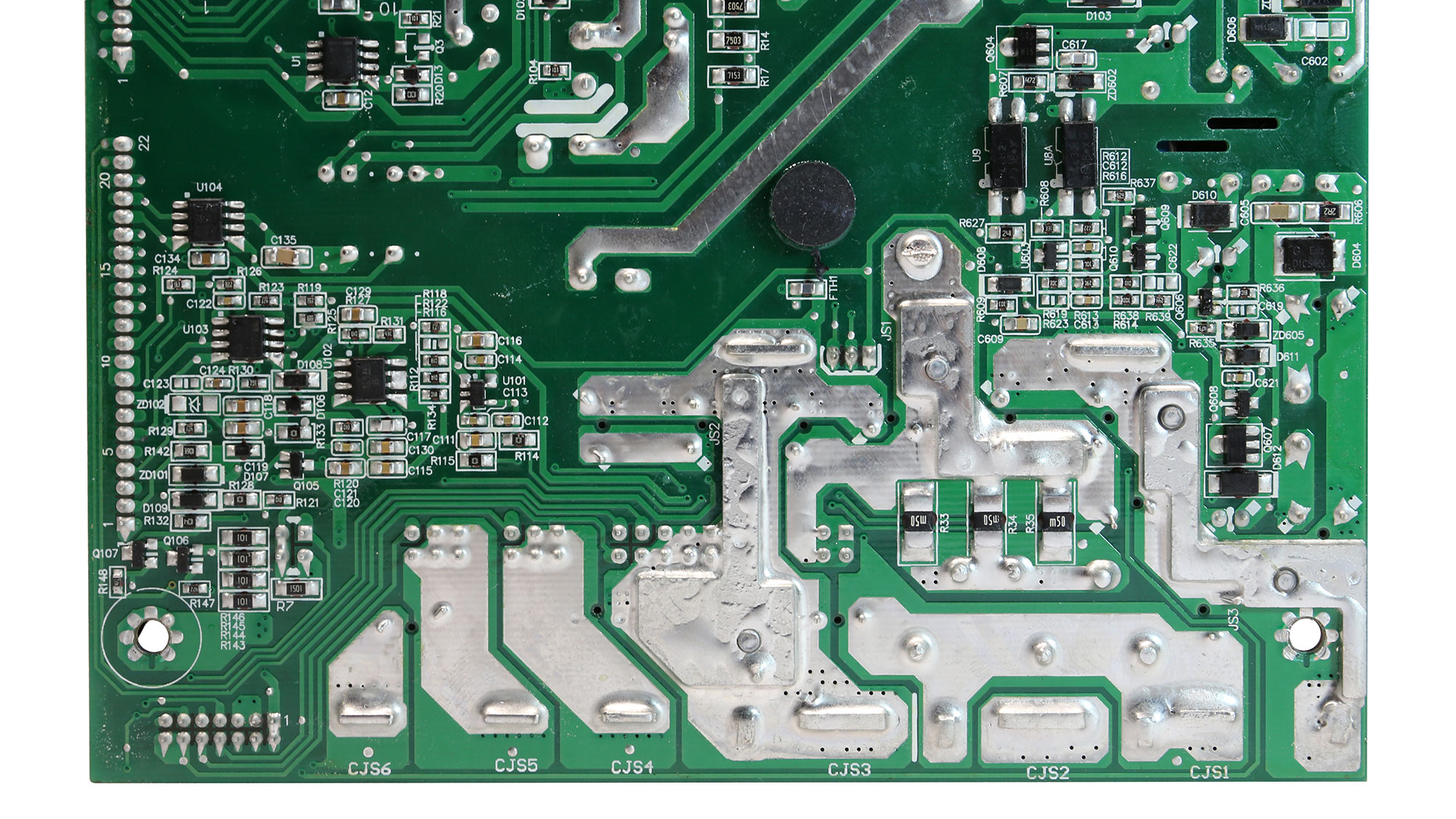
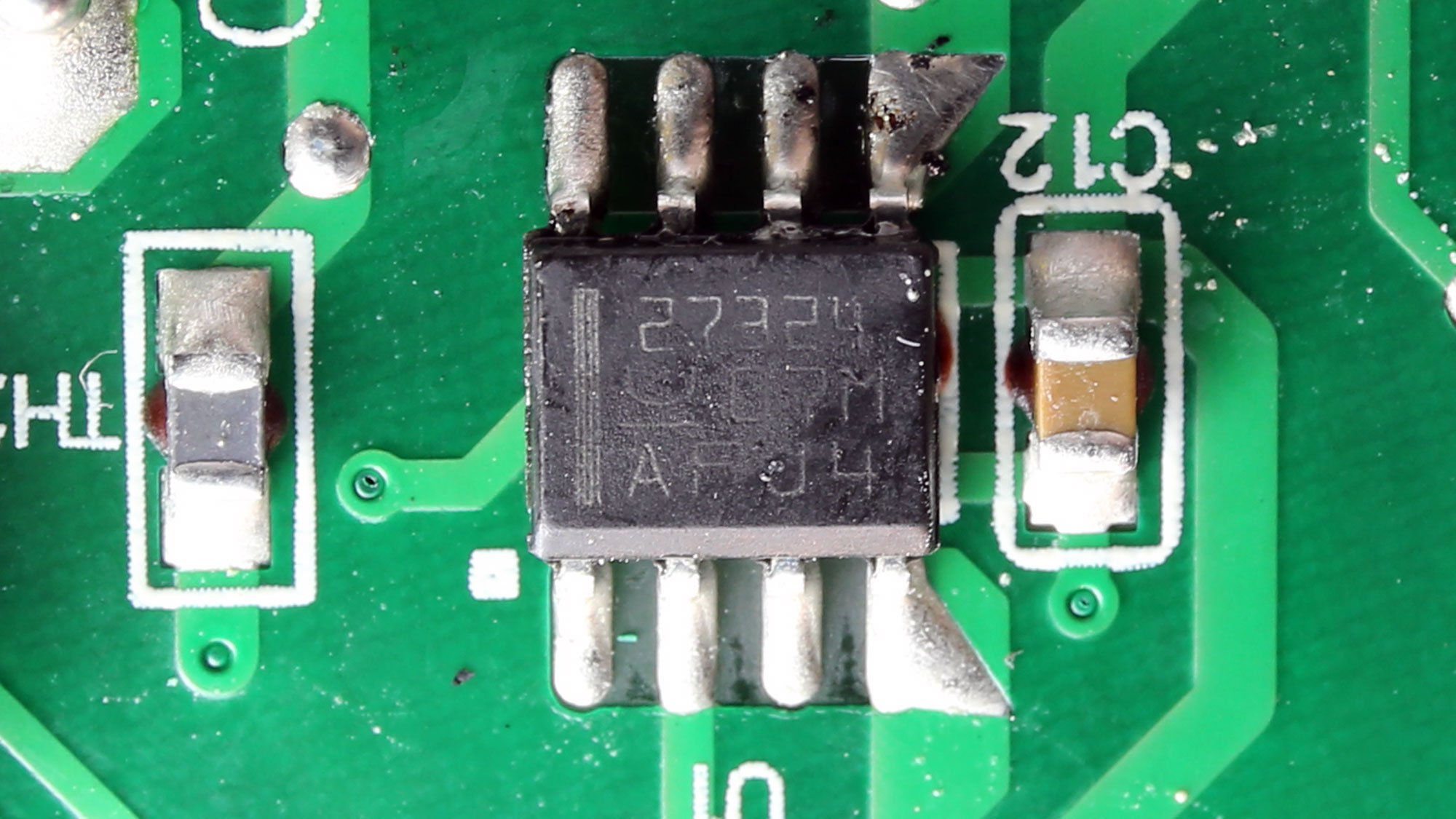
Soldering quality is good enough.


The cooling fan uses a fluid dynamic bearing and has 140mm diameter, so there is no need to spin at fast speeds to provide a decent airflow.
MORE: Best Power Supplies
MORE: How We Test Power Supplies
MORE: All Power Supply Content
Current page: Specifications and Part Analysis
Next Page Load Regulation, Hold-Up Time, Inrush & Leakage Current, Efficiency and Noise
Aris Mpitziopoulos is a contributing editor at Tom's Hardware, covering PSUs.
-
Co BIY Another nicely done review. Seems lots of people will need a 1000 Watt supply now.Reply
This is the first time I've heard about PCIe 5.0 having anything to do with the power supply ?
Maybe in the next review you could explain this. -
jkflipflop98 I picked up a 1kw cooler master PSU about 10 years ago or so. It's still going strong.Reply -
escksu ReplyCo BIY said:Another nicely done review. Seems lots of people will need a 1000 Watt supply now.
This is the first time I've heard about PCIe 5.0 having anything to do with the power supply ?
Maybe in the next review you could explain this.
Its not really about the PCIE 5.0 slot but the power connector for graphics card. New graphics cards are supposed to utilise the so-called "PCIE 5.0 16pin power connector" (again, nothing to do with PCIE 5.0 slot).
Eg. the RTX4090 uses PCIE 5.0 16 pin power connector but its actually a PCIE 4.0 16x card.
You do not need any special PSU in order to utlise the PCIE 5.0 slot on your board. Currently there are no PCIE 5.0 devices other than SSD.